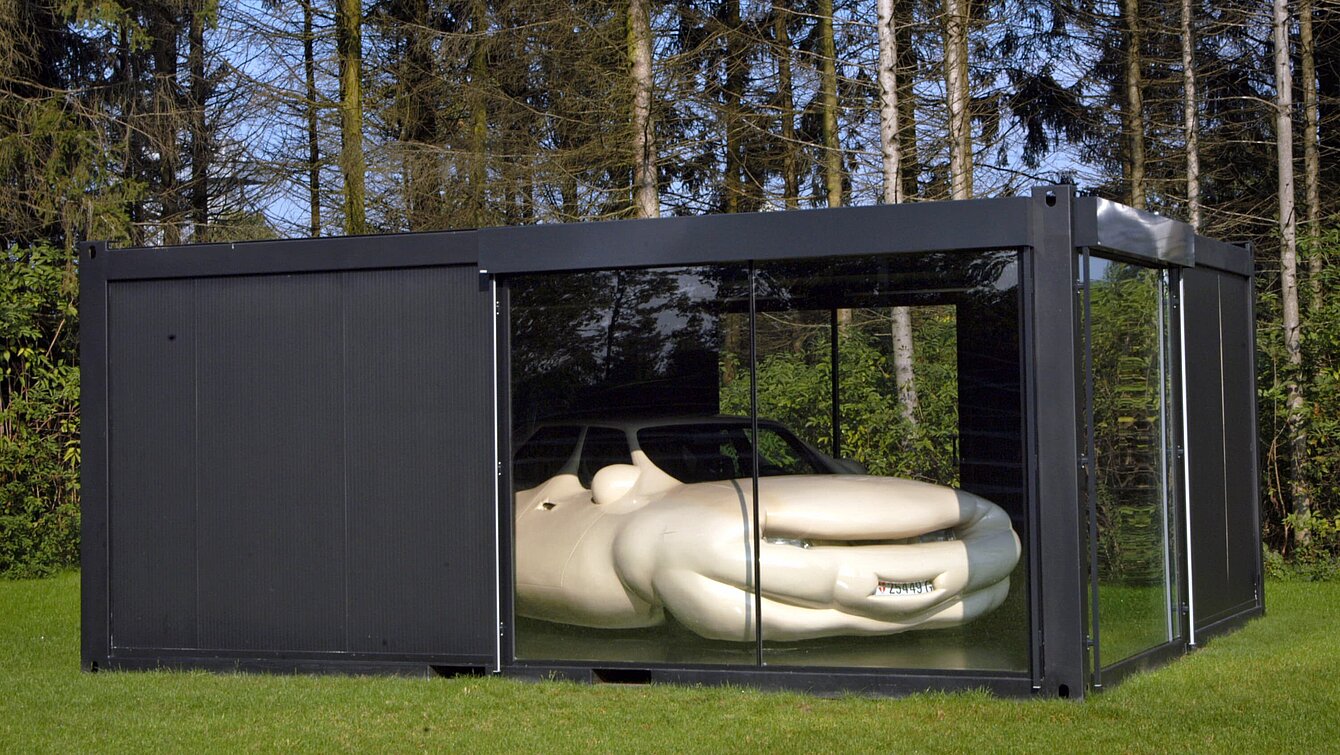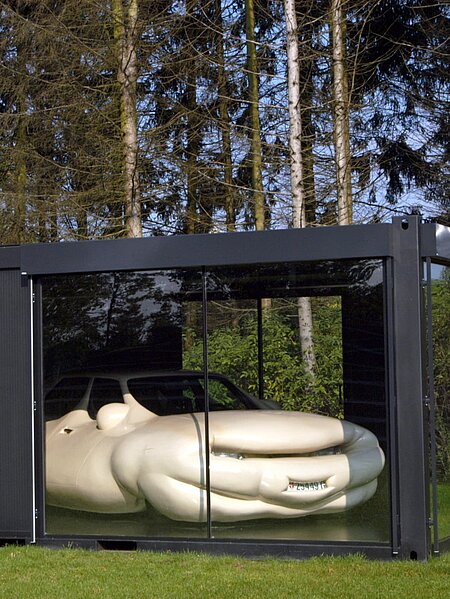Wurm coats a real car in plastic and inserts an additional layer of polyester, so changing a shape that is very familiar to us by exaggerating its volume. This means that the car—the classic symbol of mobility and status—loses its natural proportions, its shape and even its functionality. It not only becomes ‘fat’ but is also transformed from a hard metal object of utility into something visually soft and quite surreal. The vehicle is no longer mobile—it seems to be melting away, and we are left with a grotesque yet lovable monster.
Discover the
Universalmuseum Joanneum
Graz
Styria
Closed

More than 85 animal species from all continents live in the Herberstein Animal World.
Universalmuseum
Joanneum
Back to Universalmuseum Joanneum
Austrian Sculpture Park > Discover > Sculptures > 36. Fat Car
About the sculpture
The car as a symbol for mobility plays a favoured role in the art of the 20th century, stretching from Marinetti’s Manifesto of 1909 (“A racing car is more beautiful than the Nike of Samothrace”) to the ‘car compressions’ by Cesar, Arman, and Vostell. Mainly in the Nouveau Realisme, Fluxus and Happening movements, immobility was highlighted by works such as the car cast in concrete by Wolf Vostell or Gottfried Bechtold’s “Concrete Porsche”. Thus they continue a tradition within object art of turning objects into art.
Erwin Wurm’s sculptural work is to be placed within these art movements from Duchamp to action art. In addition to his playful treatment of the function of use of objects, he also focuses on the material and material manipulation of sculpture. Duchamp was the first to fathom the material state of sculpture, when in his 1919 work “Air de Paris”, he exhibited “immaterial air”.
Subsequently since the 1960s, numerous artists such as Yves Klein, Carl André and Richard Serra have made the material status of sculpture the object of their artistic examination. With his “Fat Car”, Erwin Wurm addresses the classic concept of the volume of a sculpture. Through putting additional layers of material onto a vehicle, he extends it to the extent that the object of use loses its natural proportions and form. With the polyester added, the car does not only become a “fat car” but also an object expanded by volume, as was also shown in Wurm’s up-to-date practice of jumper sculpture on people.
The car, however, is also transformed from a metal object into a visually soft object in a more surrealist tradition. The car seems to melt like in Dalì’s work; it does not become immobile due to its “obesity” and enormous volume, but also due to its softness. It appears to be a grotesque monster.




















